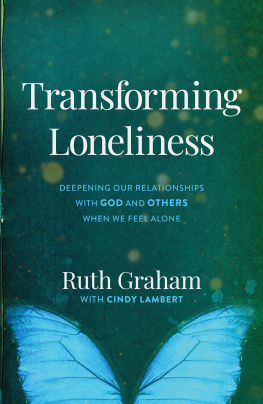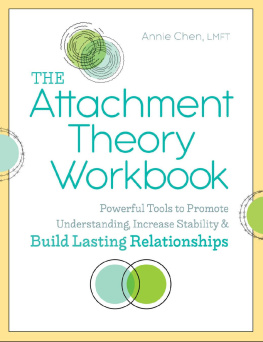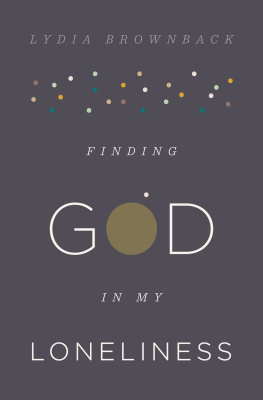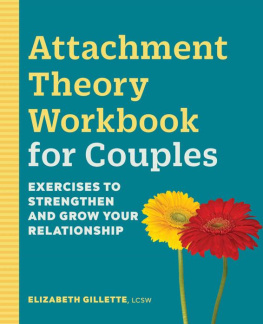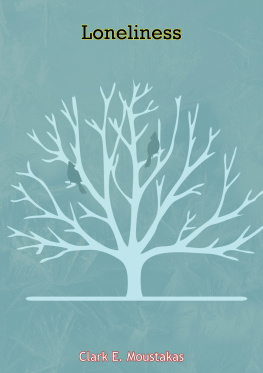
Publishers Note
This publication is designed to provide accurate and authoritative information in regard to the subject matter covered. It is sold with the understanding that the author and the publisher are not engaged in rendering psychological or other professional services. If expert assistance or counseling is needed, the services of a competent professional should be sought.
Copyright 2014 by Stronger Relationships LLC
16350 Ventura Boulevard, Suite D-501
Encino, CA 91436
All Rights Reserved.
Cover design by CreateSpace
Cover image by CreateSpace
Edited by CreateSpace
Text design by CreateSpace
Distributed in the United States by CreateSpace
ISBN 10: 0615860893
ISBN 13: 978-0615860893
Stronger Relationships is online at: www.strongerrelationships.org.
Dedicated to skillfully provided love, which helps us to nourish ourselves and others.
ACKNOWLEDGMENTS

I thank my best friend Carol Kiriakos for editorial assistance and for being the love of my life. I also appreciate Jean and Danielle, friends since early childhood who have influenced this book by affecting the person I have become. Additional influences upon me resulting in this book are numerous, including my fathers persistence, my mothers artistry, the skillfulness of my mindfulness instructors in teaching me about having a progressively more direct and naked experience of living, Bob and Rita Resnick, PhD (two of the most potent psychologists I have ever met), David Wallin, PhD, and Dan Hughes, PhD, who have both written inspiring books on practical applications of attachment theory, and my experiences with those in loneliness, which have shown me that humans can endure pain with dignity and (often) patience and also that working through the sources of loneliness is a learnable skill. I thank Ruth Caas, LCSW as well, for her many contributions to my professional growth.
TABLE OF CONTENTS

INTRODUCTION:

Important Information and How to Use This Book
Loneliness is quite painful, especially when it lasts a long time and seems so hard to change. Have you ever been among people, even those whom you like, and still felt alone, inadequate, and separate, or just unable to connect with them in a consistent way? Loneliness is something everybody experiences, but chronic feelings of loneliness are not typical to the human condition and do not need to remain typical for you. If you do experience chronic feelings of loneliness, you may need to work on something psychologists refer to as your attachment style. By doing so, you are likely to find it easier to be kind to and truly aware of yourself, and in turn relate in a more satisfying way to others. Imagine having relationships that are strong, satisfying, and stable. This is possible once you (and then others) see who you are, but it will require some patience and work.
My goal is to help you develop a clear framework, by learning about attachment styles (in just two more pages, you will already read the bullet-pointed sections defining these attachment styles). With that clarity, you can approach the work on your loneliness with precision. Part of the pain can be that it is hard to understand why loneliness continues to be your experience over time. Lacking that understanding can leave you feeling hopeless to change it. Why do others seem to be able to have fulfilling relationships when you are not? What is it they have that you yourself can develop? It is not attractiveness, money, or power, since many people with all three are quite lonely. Developing answers to these questions builds hope, and gives you the power to begin building toward that kind of satisfaction with your relationships.
This workbook presents a step-by-step approach to build success in relationships. Initially, you will work to improve existing problems you may have with your attachment style. Next you will build your awareness of and responsiveness to yourself, a precursor to having healthy, strong relationships with others. Youll then be prepared to work on building satisfying relationships with others later in the book. Though some suggestions are included, superficial tips to meet people are not the focus here. If it were that simple, you would already be surrounded by loving relationships. Rather, this workbook focuses on activities that help you create the deeper, lasting internal changes needed to build ongoing satisfaction with your relationships.
Lets identify who is most likely to gain from this workbook. You are likely to benefit from this workbook if you are having repetitive problems forming or maintaining satisfying relationships, not if you are lonely due to a specific and temporary life circumstance such as adjusting to a recent move or divorce. If you are committed to making your own changes, not demanding that others change to make you happy, you are very likely to benefit from this book, because you are ready to work on yourself. If you do need the support of therapy because you are deeply in pain, this book cannot take the place of therapy, though this book may be extremely helpful used in combination with that therapy. That is, this book is intended for those having mild to moderate challenges with loneliness, not for those who are feeling helpless or hopeless. Also, you will get the most benefit if you move slowly while doing the exercises in the book, truly experiencing them, instead of skimming the book. Working through this book is not to be solely an intellectual exercise, but rather an experience putting you in greater communication with yourself. That deeper method of approaching the book is likely to help you with your loneliness, whereas skimming the book intellectually is unlikely to produce life changes.
There is one other caveat about completing this book, important enough for a separate paragraph. You may feel warm and content after completing some parts of this book, particularly regarding some exercises in . However, this is not a feel-good workbook per se. This workbook is about helping you to spot and address issues that keep you lonely, and that is not mild material. Completing some portions of this workbook may evoke feelings of sadness, and you may feel defensive at other points, both of which may actually signify that this book is helping you get in touch with the problems which currently trap you. If so, remember your motivation for working through this book, or if desired, you may decide to stop or to seek therapy to support yourself in completing the exercises. I add this caveat so that you can begin informed and prepared. If you begin with the expectation of seeing problems within yourself and your relationship history, but maintain some joy in having something you can do to address those problems, you have a great mindset with which to approach this work.
This book is a synthesis of modern theory and research on human relationships, integrated with ancient Eastern philosophy. I will cite my sources at times, not only to give credit, but also because I want you to know that the strength of this book is not based on merely my personal theory about how to build your success in relationships. On the contrary, without the work of those cited, this book could not exist. The activities in this book flow from cutting-edge integrations of several theories and related research, but those theories and the related research themselves are already established. First I will introduce the important theories you need to understand to build your success, and then Ill add the integration.
Next page


